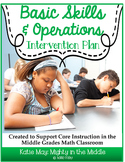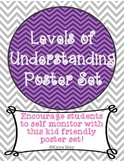Differentiation has become a major focus in education today. However, I worry about what many educators are calling differentiation. Many educators today are focusing on producing leveled activities, station teaching, and other strategies that group children for long periods of time into low, medium, and high ability groups. While I feel that these strategies have their time and place in the classroom, I do not feel that they should monopolize how the classroom functions.
So, how do I effectively differentiate within my classroom?
Differentiation Strategy 1: Use direct instruction that is tailored to meet different learning styles.
The How: To support my auditory learners, I try to incorporate some type of song, rhyme, or chant into my lesson. Students are required to participate in saying/singing the verses multiple times and in multiple ways (standing, sitting, whisper voices, while making silly faces at a partner, etc). I also make sure that I target my kinesthetic learners with movement. Many times to introduce a topic I will hand each student a 3x5 card with examples (and possibly some non-examples) of our topic for the day. Then I ask the students to move around the room and create groups. I do not give them the rules for creating groups because I want them to discover the rules many times. There are also times when I use manipulatives to support my kinesthetic learners. The use of manipulatives can also increase understanding for all learners of the concrete concept before moving to abstract thinking.
Differentiation Strategy 2: Create needs based groups AFTER guided practice at the proficient level.
The How: Guided practice is given at the proficient level of understanding to determine if a student is able to perform at that level with a bit of support. Any time I give an assignment, I require a 5-7 minute struggle time where the students are not allowed to ask questions. However, when a student has struggled through, asked questions, gained support and guidance, and still can not perform the task, this student needs further support. Most of the time, if there is one who needs support, there are more. These are the students that I pull for small group instruction. Students who are able to continue on without assistance proceed with independent practice followed by an extension task for high learners.
Differentiation Strategy 3: Allow students who have struggled within a unit to complete their culminating task with another student of similar performance.
The How: I do not do many tasks throughout my units. I like to save tasks for the end of the unit when a student knows all the components and how they work together. This provides a true performance assessment of combining skills that have already been mastered. Many times I offer choice boards or open questions that require the students to put skills together at higher levels.
Differentiation Strategy 4: Fill in academic gaps on an individual basis.
The How: I created and developed a test bank, data recording sheet, and practice for 20 of the most common basic skills that I found to often be lacking in my middle school math students. I used this system to identify gaps in understanding, assign individual practice and remediation, and monitor growth towards proficiency throughout the year. I attribute much of my success in the classroom to this one strategy! I did not waste time reteaching everything to everyone or stopping my lessons to reteach a simple skill. I identified gaps in individual students' understanding and filled them in as quickly as possible. Find what I used in the link below:
Differentiation Strategy 5: Increase student ownership by having each student set individual learning goals and monitor progress towards those goals.
The How: At the beginning and end of every lesson, I like to have my students rate their learning. The rating scale is modeled after Marzano's levels of learning. This one if FREE in my TPT store!
Click the link below to go directly to the product.
- Level 1 = The student can not perform the skill even with help.
- Level 2= The student can perform the skill but requires some help.
- Level 3= The student can perform the skill without help.
- Level 4= The student can perform the skill and teach someone else how to perform the skill.
At the beginning of the lesson, the students rate their learning to establish a baseline. If there are any students who rate themselves a 4 (and are being truthful), these will be the expert students during guided and independent practice. All other students set a goal to achieve by the end of the lesson based on their base line. At the end of the lesson, students rate themselves again and discuss what strategies/who helped them along the way and if any confusion still exists. **This is viewed as differentiation because each student is working under pretenses of an individual achievement goal and pathways to the goal will be different for each student.
I also have my students set individualized goals based on pre-test scores for each unit. Students become empowered to learn and grow when they are able to set goals and monitor progress towards their goals. They also enjoy the competitiveness of who can grow the most points on the post-test.
These strategies have been tried and true in my classroom and have led to the success and growth of many many students.
I would love to hear your ideas and feedback.
How do you differentiate within your classroom?






Share your opinion: